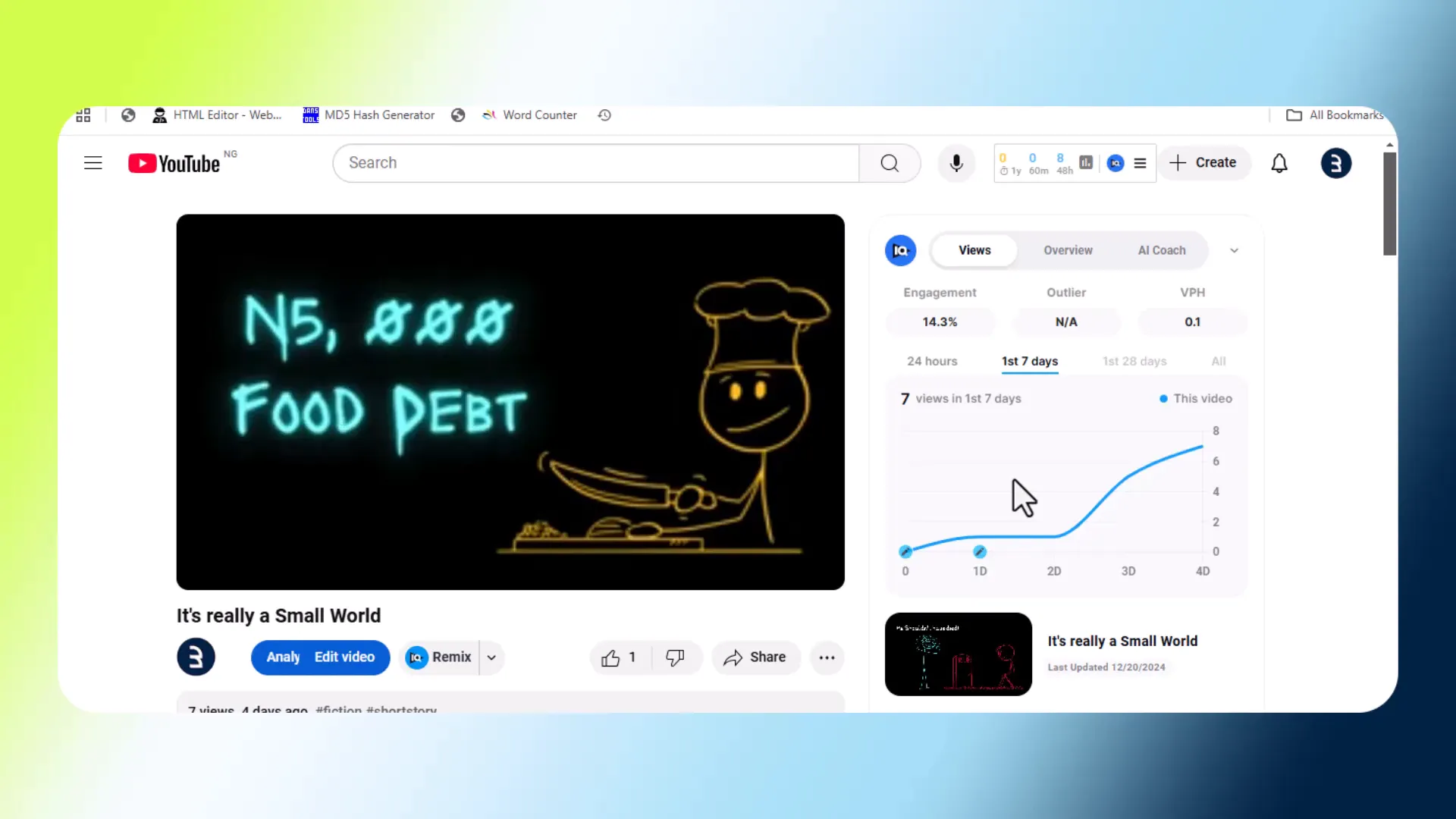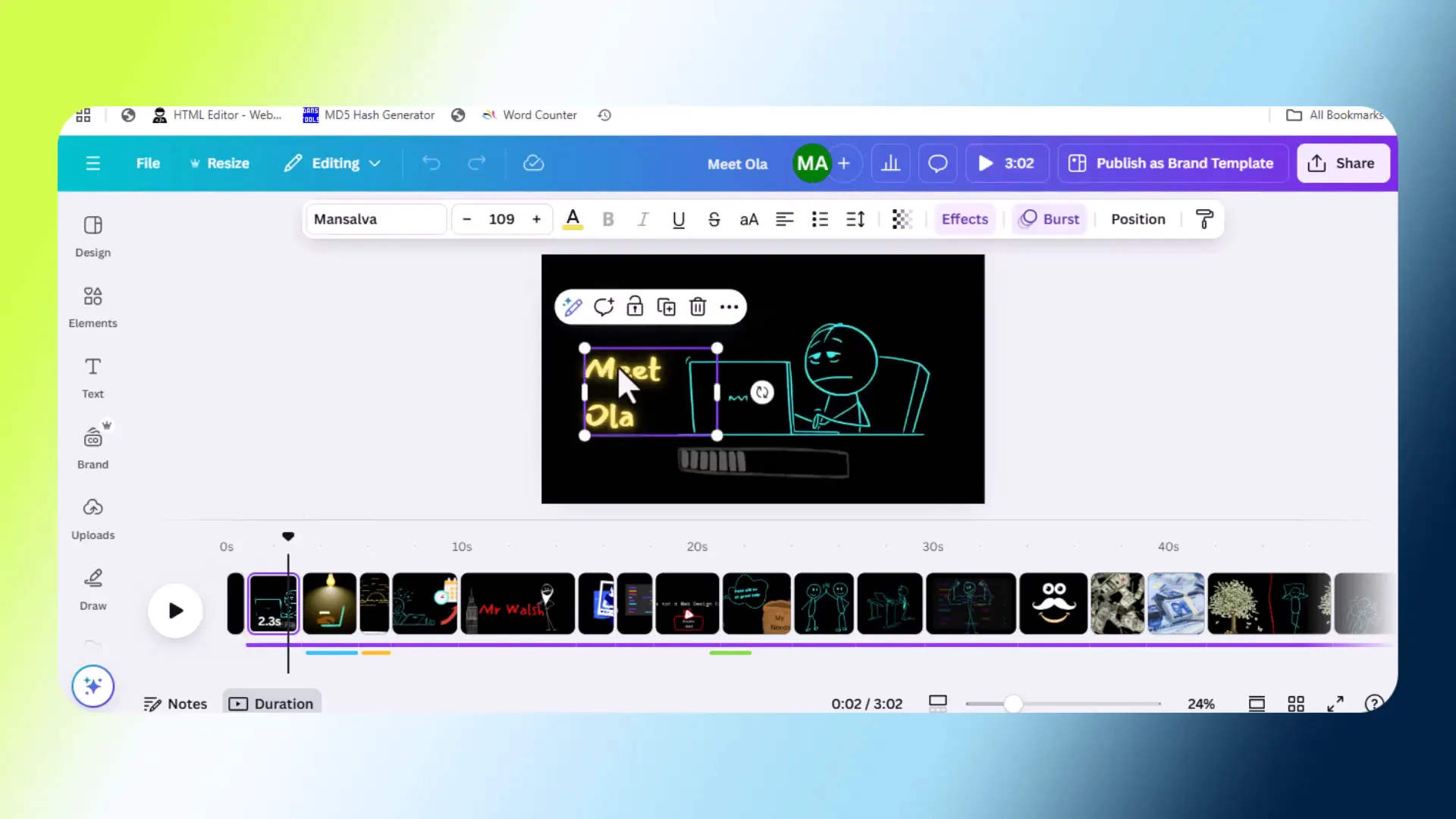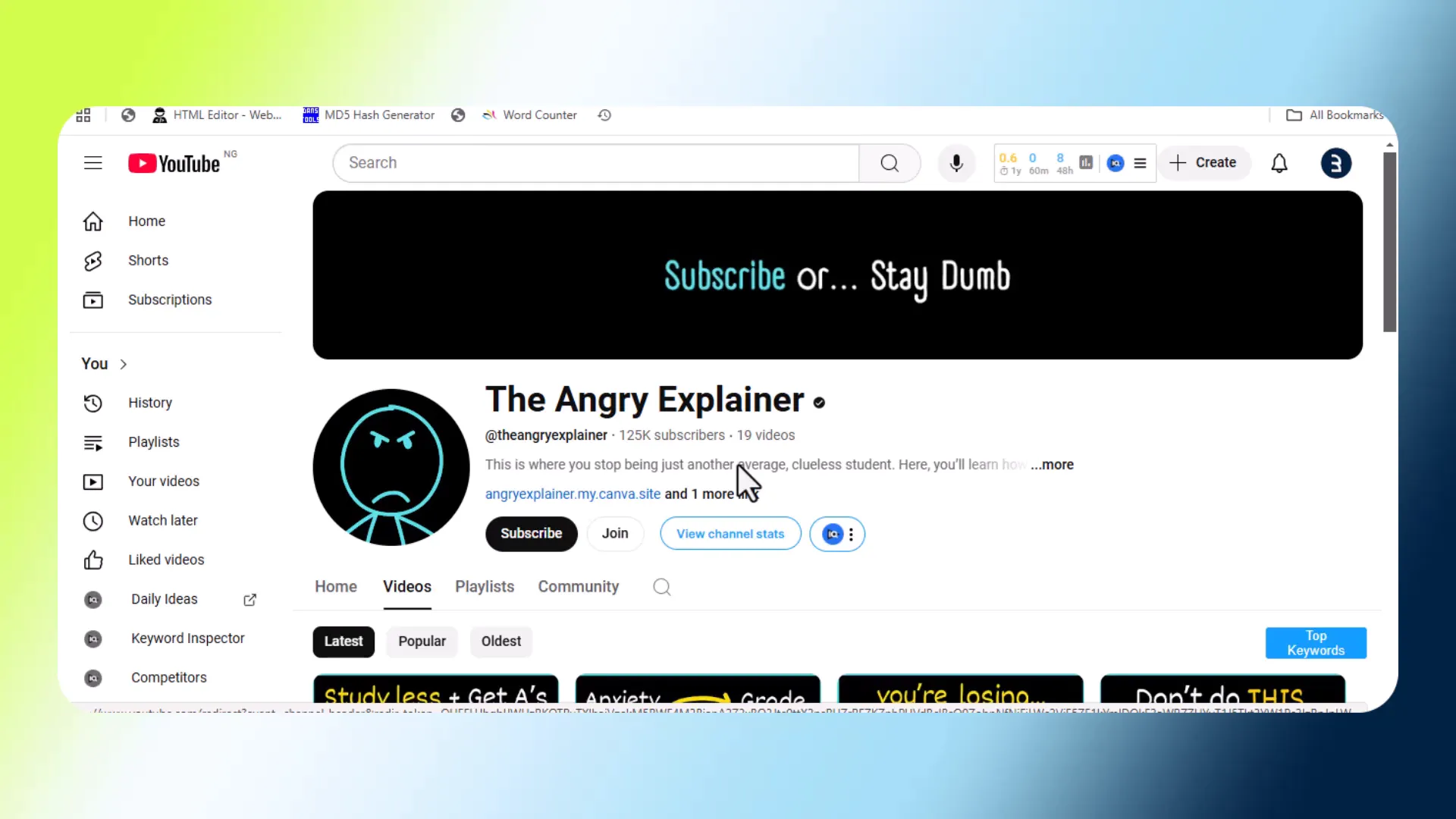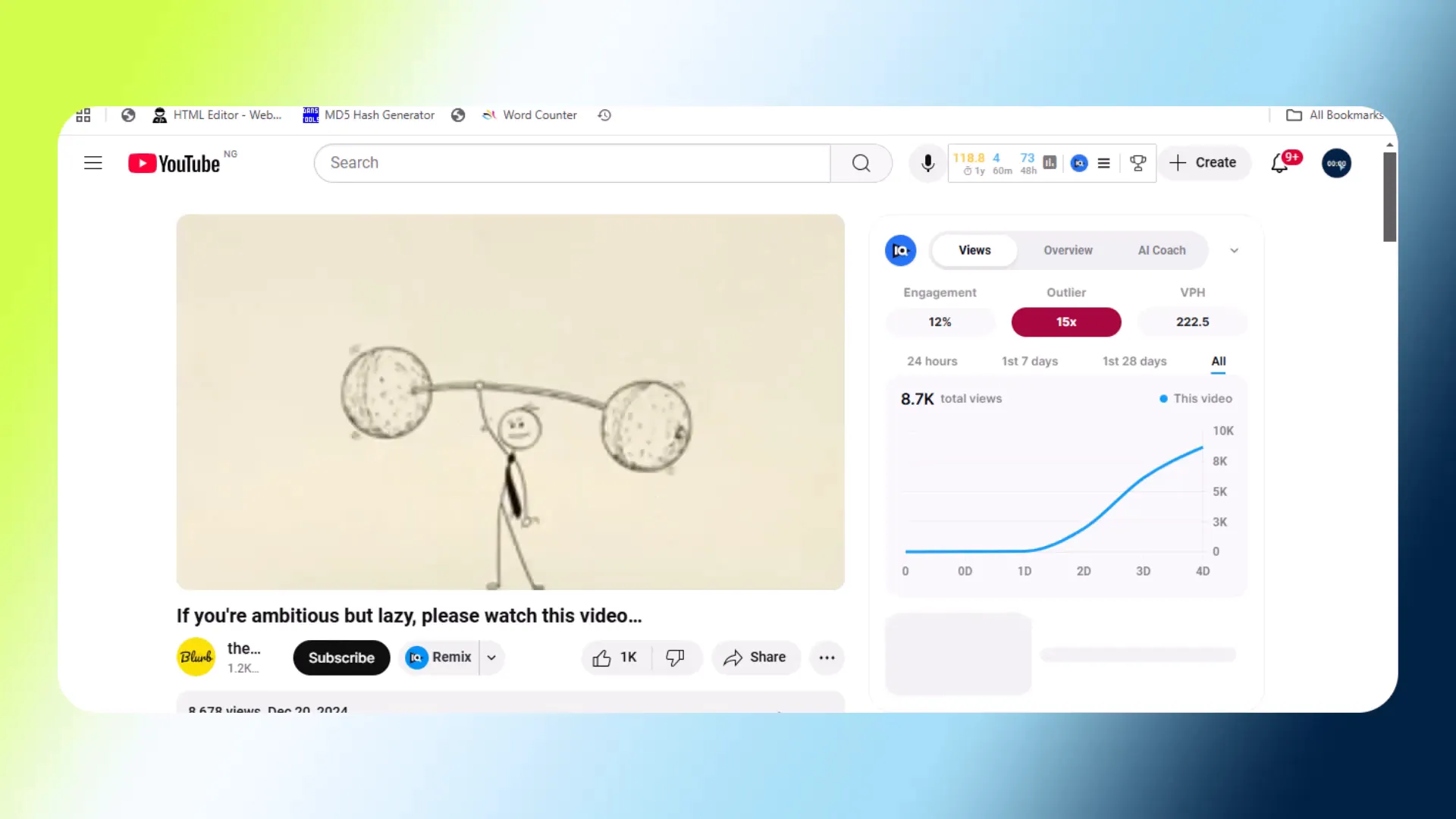In the age of digital content creation, faceless videos have emerged as a popular trend, allowing creators to engage audiences without showing their faces. This blog explores how one successful YouTube channel, The Angry Explainer, has harnessed the power of Canva to create engaging content that attracts millions of views, and how you can replicate their success.
Introduction to Faceless Videos
Faceless videos are a revolutionary concept in digital content creation. They allow creators to connect with audiences without the need for on-camera presence. This format not only provides anonymity but also encourages creativity, as the focus shifts entirely to visuals and narratives.
The rise of faceless videos is driven by the increasing demand for engaging content that can be produced quickly and efficiently. With tools like Canva, anyone can create high-quality videos without extensive technical skills. This democratization of video production has opened doors for countless creators.
Why Choose Faceless Videos?
- Privacy: Creators can maintain their anonymity, which can be crucial for personal safety or professional reasons.
- Focus on Content: Viewers concentrate on the message rather than the presenter, enhancing the impact of the content.
- Accessibility: With user-friendly tools, anyone can produce videos, regardless of their background in video editing or production.
- Versatility: Faceless videos can be tailored for various niches, from education to entertainment, making them adaptable for different audiences.
The Angry Explainer: A Case Study
The Angry Explainer serves as a prime example of successful faceless video content. This YouTube channel, which started in July 2024, quickly amassed 125,000 subscribers with just 19 videos. The creator leverages Canva to design engaging visuals, proving that simplicity can yield significant results.

Key Features of The Angry Explainer’s Videos
- Visually Engaging Thumbnails: The thumbnails are crafted in Canva, designed to attract clicks and draw viewers in.
- Compelling Narratives: Each video tells a story that resonates with viewers, keeping them engaged throughout.
- High Production Value: Despite the faceless format, the videos maintain a professional appearance, thanks to thoughtful design choices.
Analyzing Video Performance
Understanding the performance of faceless videos is crucial for content creators. Metrics such as views, likes, and audience retention can provide insights into what works and what doesn’t.
The Angry Explainer’s most popular video has garnered 2.3 million views, showcasing the potential reach of well-crafted faceless content. Analyzing viewer feedback through comments can also guide future content creation strategies.

Metrics to Monitor
- Views: Indicates how many times a video has been watched.
- Watch Time: Measures the total minutes viewers spend watching the content, crucial for YouTube’s algorithm.
- Engagement Rate: Combines likes, shares, and comments to assess how well the content resonates with the audience.
- Audience Retention: Shows how long viewers stay engaged with the video, helping to identify drop-off points.
Creating Content with Canva
Canva is an invaluable tool for producing faceless videos. It offers a wide array of templates, graphics, and animations that can enhance visual storytelling.
To create a video, users can start by selecting a template that fits their theme. From there, they can customize elements such as text, images, and animations to suit their narrative.

Steps to Create a Video in Canva
- Choose a Template: Start with a video template that aligns with your content’s theme.
- Add Visual Elements: Incorporate images, icons, and graphics to support your story.
- Animate Components: Use Canva’s animation features to bring your visuals to life.
- Incorporate Audio: Upload background music or sound effects to enhance the viewing experience.
Crafting a Compelling Story
A strong narrative is the backbone of any successful video. Faceless videos thrive on storytelling techniques that captivate viewers from start to finish.
To craft a compelling story, consider the following elements:
- Relatable Characters: Create characters that viewers can connect with, even if they are not seen on screen.
- Conflict and Resolution: Introduce challenges that the characters face and provide satisfying resolutions to keep viewers engaged.
- Emotional Appeal: Use emotional triggers to resonate with the audience, making the story memorable.
The Role of Voiceovers in Video Creation
Voiceovers play a crucial role in faceless videos, providing context and enhancing the narrative. A well-executed voiceover can transform a simple visual into an engaging story.
Services like 11 Labs allow creators to generate high-quality voiceovers that can match the tone and style of the video. This adds a professional touch, making the content more appealing to viewers.

Tips for Effective Voiceovers
- Clear Articulation: Ensure the voiceover is clear and easy to understand.
- Emotional Tone: Match the tone of the voiceover to the content’s mood, whether it’s serious, humorous, or informative.
- Pacing: Vary the pacing to maintain interest and emphasize key points in the story.
The Ripple Effect of Freelancing Stories
Freelancing isn’t just about personal success; it often weaves intricate stories that impact many lives. One freelance project can create a chain reaction, affecting clients, collaborators, and even families. For instance, when a freelancer like Ola experiences a setback, it can ripple through their network, affecting others reliant on that income.
In the case of Ola and Femi, the consequences of a single missed payment illustrated how interconnected our lives can be. Each person in this chain faced their own struggles, emphasizing the importance of consistent communication in freelance relationships. Understanding these dynamics can inspire freelancers to maintain transparency and reliability in their work.

Why These Stories Matter
- Highlighting Interdependence: Freelancers often rely on each other, creating a web of support and responsibility.
- Building Empathy: Sharing these stories fosters understanding and compassion within the freelance community.
- Encouraging Resilience: Learning from others’ challenges can inspire freelancers to persevere through their own difficulties.
My Personal Experience with Video Creation
Creating videos can be both exhilarating and daunting. My journey into video creation began with a simple idea: to share stories that resonate with viewers. Initially, I faced challenges in scriptwriting and visual design, but with tools like Canva, I found a way to express my creativity effectively.
Utilizing Canva allowed me to focus on the narrative without getting lost in technical details. The platform’s user-friendly interface made it easy to design engaging visuals that supported the story I wanted to tell. Each video became a learning experience, enhancing my skills and confidence.

Key Lessons Learned
- Embrace Simplicity: Sometimes, less is more. Simple designs can effectively convey powerful messages.
- Iterate and Improve: Each video is a chance to refine your craft. Analyze feedback and make necessary adjustments.
- Seek Inspiration: Draw ideas from various sources. Inspiration can come from other creators, art, or even everyday experiences.
Tools and Resources for Video Production
The right tools can significantly enhance the video creation process. For those venturing into faceless videos, several resources can simplify production while maintaining quality.
Here are some essential tools:
- Canva: An intuitive design platform that provides templates and graphics for video creation.
- 11 Labs: A powerful tool for generating professional voiceovers, adding depth to your narratives.
- Audacity: Free audio editing software for refining voiceovers and background sounds.
- Unsplash and Pexels: Libraries for high-quality, royalty-free images and videos to enhance your visuals.

Overcoming Challenges: Copyright Issues
One of the significant challenges in video production is navigating copyright issues. Using copyrighted music or visuals can lead to videos being taken down or demonetized, which is frustrating for creators.
To avoid these pitfalls, it’s crucial to use royalty-free or original content. Platforms like Canva provide a range of sound effects and music that are safe to use. Always double-check licenses and permissions for any external content to ensure compliance.

Best Practices for Copyright Compliance
- Use Royalty-Free Resources: Stick to platforms that offer content specifically for commercial use.
- Attribution: When using content that requires attribution, ensure you give proper credit to the creators.
- Create Original Content: Whenever possible, produce your own visuals and audio to eliminate copyright concerns.
Exploring Other Successful Channels
Success in faceless video creation isn’t limited to one channel. Many creators have carved out their niches, proving that diverse storytelling can attract substantial audiences. Channels that focus on educational content, motivational themes, or even entertainment can thrive without showing faces.
For instance, a channel titled “If You’re Ambitious but Lazy” recently gained traction with over 8,000 views within days. Their approach of using simple animations and relatable content resonates with viewers, demonstrating that quality storytelling transcends visual presentation.

Characteristics of Successful Channels
- Relatable Themes: Topics that resonate with a broad audience can lead to increased engagement.
- Consistent Branding: A cohesive visual style helps establish identity and recognition.
- Engaging Thumbnails: Eye-catching thumbnails can significantly increase click-through rates.
Conclusion: Your Path to Creating Faceless Videos
Embarking on the journey of creating faceless videos can be rewarding and fulfilling. With the right tools, a compelling narrative, and a commitment to overcoming challenges, anyone can succeed in this space. The stories you choose to tell have the power to connect with audiences and inspire change.
Start by exploring your interests, leveraging platforms like Canva, and experimenting with different storytelling techniques. Remember, every creator has a unique voice—yours deserves to be heard.
